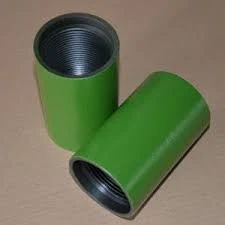Exploring Innovative Techniques in Joint Drilling for Enhanced Efficiency and Performance
The Significance of Pup Joint Drilling in the Oil and Gas Industry
Pup joint drilling is a critical operation within the oil and gas sector, specifically within drilling processes. This technique involves the use of a pup joint, which is a short piece of pipe used to make adjustments in drill string length, providing increased flexibility and efficiency during drilling activities. Understanding pup joint drilling is essential for professionals in the industry, as it plays a pivotal role in ensuring the optimization of drilling operations.
What is a Pup Joint?
A pup joint is a component of the drill string. Typically ranging from a few feet to several feet in length, these joints are employed to serve various purposes during drilling. They help in adjusting the length of the drill string based on specific operational requirements. The utilization of pup joints helps in maintaining optimal tension and balance in the drill string, thereby improving drilling performance and drilling accuracy.
Importance of Pup Joints in Drilling Operations
One of the key aspects of pup joint drilling is its capacity to enhance the efficiency of the drilling process
. Here are several reasons why pup joints are essential1. Flexibility in Depth Adjustment Drilling operations often encounter unexpected geological challenges, which may require adjustments in the length of the drill string. Pup joints provide the flexibility needed to quickly modify the length, allowing for adjustments in response to changing conditions.
2. Cost-Effectiveness Utilizing pup joints can lead to cost savings in drilling projects. By reducing the need for more extensive and costly drilling components, operators can achieve their objectives with a lower investment. Moreover, the efficiency gains from using pup joints often translate into reduced drilling times, further lowering operational costs.
3. Minimizing Pressure Loss When drilling at great depths, maintaining pressure is crucial. Pup joints can be strategically placed within the drill string to minimize pressure loss. This is particularly important in maintaining the stability of the wellbore, preventing issues such as blowouts or equipment failure.
4. Enhanced Drilling Performance The use of pup joints allows for better management of the drill string dynamics. This leads to improved drilling rates and better penetration in hard formations. By optimizing the drill string, operators can enhance overall performance, leading to more successful drilling operations.
pup joint drilling

5. Customizable Solutions Different drilling environments may require specific configurations of the drill string. Pup joints come in various lengths and specifications, allowing drilling teams to customize their setups based on individual project requirements. This adaptability ensures that operators can effectively address unique challenges as they arise.
Challenges in Pup Joint Drilling
Despite its advantages, pup joint drilling does come with certain challenges. One major concern is the need for meticulous planning and execution. Improperly deployed pup joints can lead to issues such as misalignment or structural weaknesses in the drill string. Additionally, the increased complexity of having multiple components in the drill string could lead to complications during repairs or maintenance.
Moreover, the proper selection and handling of pup joints are critical. Incorrect choices based on inadequate analysis of the drilling environment may result in equipment failures or unsafe drilling practices. Thus, it is imperative for drilling engineers and operators to have a deep understanding of their operations as well as the specific characteristics of pup joints.
Future of Pup Joint Drilling
As the oil and gas industry continues to evolve, the role of pup joints in drilling operations is also likely to change. Innovations in materials science and engineering are paving the way for stronger, lighter, and more efficient pup joints. These advancements can further enhance the integrity and performance of the drill string.
Additionally, advancements in drilling technology, such as automation and real-time data analytics, may optimize the deployment and effectiveness of pup joints. Being able to analyze real-time data can help operators make informed decisions about when and how to utilize pup joints effectively.
Conclusion
In summary, pup joint drilling is a fundamental aspect of the oil and gas industry's operations. Its contributions to efficiency, flexibility, and cost savings play a crucial role in the success of drilling projects. As the industry continues to advance, the role of pup joints will likely adapt and become even more integral. Thus, understanding the functionality and advantages of pup joint drilling is vital for all stakeholders involved in the exploration and production of oil and gas.
-
Choosing the Right Pup Joint Manufacturers for Oil and Gas OperationsNewsAug.22,2025
-
Tubing Coupling: The Small Connector with a Big ImpactNewsAug.22,2025
-
Tubing Crossover: The Essential Connector for Well IntegrityNewsAug.22,2025
-
Precision Flow Control in Well CompletionsNewsAug.22,2025
-
Casing Pup Joint for Optimal Well PerformanceNewsAug.22,2025
-
Reliable Connections with Wholesale Finished Casing CouplingNewsAug.22,2025







